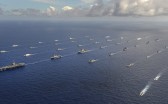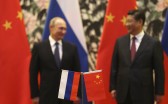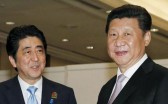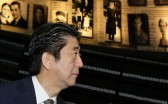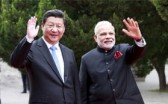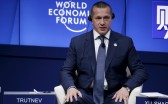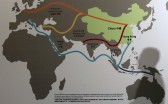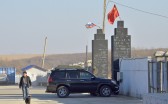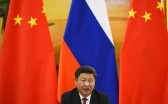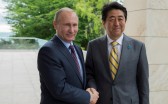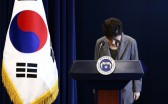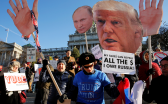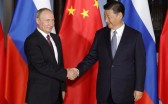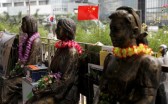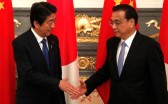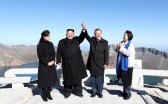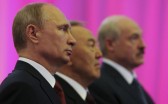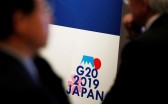In the period 1949-1989, the Northern Triangle comprised of China, the Soviet Union, and North Korea played a formidable role in a hot war and then in the Cold War, despite the Sino-Soviet dispute over more than half of this period. In this context, there was a virtual Sino-Soviet alliance, although they fiercely competed for greater influence in Pyongyang. The essence of the triangle was: 1) the commitment of both Moscow and Beijing to regime survival and economic assistance to Pyongyang; 2) a strategy in each great power to use Pyongyang in the struggle against US hegemony and alliances in Northeast Asia, even when Beijing strongly supported the US-Japan alliance against the Soviet Union for a decade; 3) an ideological bond to Pyongyang, buttressed by the attitude that the historical sacrifices on its behalf, including in the Korean War, should not be in vain; and 4) a transactional approach, in which shifts in diplomacy must involve both sides of the peninsula and reciprocal actions of the United States and other countries. Thus, peace and reunification were seen through the prism of: alliances, geopolitics, national identities, and diplomatic trade-offs. At times of embarrassment due to North Korean provocations, these principles were not discarded. Even in 1987 as the Cold War was winding down and Seoul wooed both Moscow and Beijing, the terrorist bombing of KAL 858 did not change them.
North Korea’s hold on Moscow and Beijing lasted much longer than many imagined.
Observers have stopped referring to the Northern Triangle over the past quarter century. They became fixated on the closer relations of Beijing and Moscow to Seoul than to Pyongyang. They were convinced that economic objectives trumped security ones in the post-Cold War era. Repeatedly, Chinese and Russian leaders have stated their support for denuclearization of the peninsula and diplomacy to achieve it, to the point of voting for Security Council resolutions sanctioning North Korea’s moves in opposition to these goals. The focus has been on shared handwringing over the North’s violations of these resolutions amid the overall diplomatic line-up of five versus one. Since Kim Jong-un has succeeded his father and Xi Jinping has taken office, their failure to meet has reinforced the view that an irreconcilable divide exists. We have downplayed signs that the Northern Triangle has begun to revive. Below, I present the positive argument that this is happening and will become more pronounced. The negative argument will follow from Sergey Radchenko, and then we will respond to each other’s arguments in the second stage of this Alternative Scenarios exchange.
Beijing and Moscow are dissatisfied with Pyongyang’s behavior, as has frequently been the case, but they are again guided by some of the principles that contributed to the virtual alliance. First, through thick and thin, China maintains support for the economy of North Korea, casting more doubt in 2014 than earlier but reviving aid in 2015 seemingly to earlier peak post-war levels. Russia has, of course, done far less to support North Korea’s economy, but it filled some of the gap created by China’s cuts in 2014 and is rapidly boosting trade/aid at this time. While neither Beijing nor Moscow has agreed to fund large infrastructure projects, keeping Pyongyang on edge, they leave no ambiguity in their writings that regime survival is desirable, economic ties are just, and North Korea should be in a viable and stable position to face pressure or negotiations in the coming period. In the face of US pressure against byungjin (guns and butter), Moscow and Beijing are not supportive. As in the Cold War, they prefer that North Korea not enter talks from weakness or pressure.
Second, the bulk of writings in China and Russia treat North Korea in the context of a great power struggle for the security architecture in the region. The character of the regime in North Korea is excluded from analysis. The right of the Korean people to be united under one Korean government is obscured by this obsession with balance of power maneuvering. Accusations that Washington is plotting to contain China or Russia or both through Korean unification buttress this argument. Reasoning typical of the Cold War era is unmistakable. Moreover, China and Russia praise each other’s approach to North Korea, stressing their shared thinking at summits and on other occasions. Their agreement is more in the open than at any time since the 1950s. By assuming that Washington and its allies have Cold War motives for destroying the North Korean system and absorbing the North in an allied system, they justify their own Cold War logic in defense of North Korea as the regional order is transformed.
Third, the Korean War has been restored to a place of honor in the proud history of each of their countries in facing the US-led threat during the Cold War. Indeed, the entire history of the Cold War is presented in Chinese and Russian publications with few exceptions in a distorted manner defensive of North Korea and support for it. There is little candor about its flagrant transgressions against peace and stability, the genuine aspirations of South Korea for finding a path to reconciliation, and the defensive nature of the US-ROK alliance. Beyond the geopolitical arguments, which could be construed as based on realist thinking about strategic balances, coverage of history is the most visible wedge of national identity arguments. China and Russia reserve some of their strongest criticisms for the threat of “color revolutions,” such as what could occur if the North Korean regime toppled or South Korea absorbed the North. There appears to be a fear that if another socialist regime fell or the West claimed a success in transforming a state with a bad human rights record, it would put pressure on one’s own regime. For critical actors in both China and Russia the fate of North Korea has ideological significance at the center of national identity.
Finally, Moscow and Beijing are engaged in struggles with the United States and its allies over other neighboring areas and are looking for more leverage to get their way. With situations in Ukraine and the South China Sea tense, there is every reason to anticipate a transactional approach to concessions in one disputed arena being saved for those in another. This does not mean abandonment of North Korea nor is there any likelihood of the United States agreeing to tradeoffs at the expense of its principled positions. Yet, diplomacy can involve many smaller steps. Cooperation in response to North Korean provocations can take a variety of forms, especially by countries that support denuclearization but not other goals of the allied countries.
The Northern Triangle
So far, the discussion has centered on parallel narratives in China and Russia. The case for a Northern Triangle rests on three additional factors: 1) strengthened ties between China and Russia in the form of a quasi-alliance in agreement on security challenges or, at least, a refusal to criticize each other when no agreement has been reached; 2) overlapping views on restarting the Six-Party Talks, supporting North Korea once it agrees to the goal of denuclearization under some conditions; and 3) a similar view on opposing steps that Washington and Seoul consider to be necessary for deterrence or even pressure against Pyongyang. Given these factors, there is an opportunity for the leaders in North Korea to enable a triangular configuration to materialize. They could agree to the September 19, 2005 Joint Statement, prioritize a revival of summitry with China, and coordinate with two supporters a stance that would put pressure on Seoul and Washington to rejoin the Six-Party Talks the two are eager to resume. No doubt, Washington would insist on a wide-ranging freeze and verification measures, which would result in a line-up of three against three, causing divisions in South Korea. In this way, the Northern Triangle would revive.
North Korea is the wild card in this scenario. It may be so fixated on rigid insistence that it is a nuclear power and so troubled by domestic tension that it does not grasp China’s diplomatic proposals. The scenario could be delayed by South Korea giving China further hope that it can achieve some geopolitical gains by continuing moves aimed at dividing the South from Japan and also the United States. The timetable for the revival of northern trilateralism is not set, but it is becoming more likely. This does not mean some sort of formal alliance. The US-Japan-ROK trilateralism is also not a formal three-way group of allies, given the limitations on Japan-ROK relations. Neither Beijing nor Moscow is likely to acknowledge the strength of its commitment to Pyongyang, even as their reasoning about economic support and geopolitical balancing comes more into the open, and they blame Washington for their moves.
Even without conceding that denuclearization on the peninsula is the basis for talks, Pyongyang may find a way to boost triangularity to its benefit. Greater tensions in both Russian relations with the United States and its allies (as Russia’s invasion of Ukraine expands) and Chinese relations with the United States (as the South China Sea conflict intensifies) could lead to fuller and more open support for Pyongyang. Deployment of THAAD in South Korea, against which China has warned, and other moves to increase deterrence or sanctions, could also lead to retaliation. In short, the chances are high that in the next two-three years the Northern Triangle will not just be a matter of unexpected speculation, but a subject of widespread discussion.
